
Architectural stone education in Verona
The articles in our series entitled, “Creating Architectural Stonework,†are a reflection of the Veronafiere-AIA Continuing Education Seminar at Marmomacc 2005 in Verona, Italy. During the first day of this session, architects were shown all of the steps taken to create the stonework for the new Banco Popolare project in Verona (pictured on the right). The education session combined classroom seminars and site visits on the processing of stone and specific architectural applications.The eighth edition of this educational program, which is sponsored by Stone World, will once again take place at this year's edition of Marmomacc. Industry education begins on October 3, and the show itself takes place from October 4 to 7.
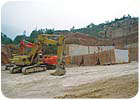
Cave Bonaldi extracts Rosso Verona marble from a site nearly 2,000 feet above sea level in the Valpolicella region of Italy, just outside of Verona.

During the extraction process, large blocks are freed from the quarry face by drilling and blasting, and these large blocks are further worked into smaller blocks that can be transported from the site.
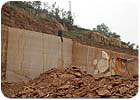
Vertical cutting in the quarry is done using diamond wire saws from Pellegrini and Marini-Quarries Group of Italy.
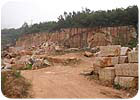
A typical block measures 4 x 8 x 4 feet in size, although Cave Bonaldi can also extract atypical shapes for specific architectural pieces, such as large columns.

Blocks are trimmed and squared to their final dimensions as needed on a stationary Pellegrini diamond wire saw.
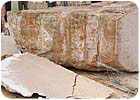
The largest blocks are used for cutting into slabs, while the smaller blocks can be used for tile and cut-to-size production.
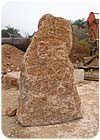
The different varieties of stone extracted by Cave Bonaldi often showcase natural fossilization (although the block pictured is quite rare).